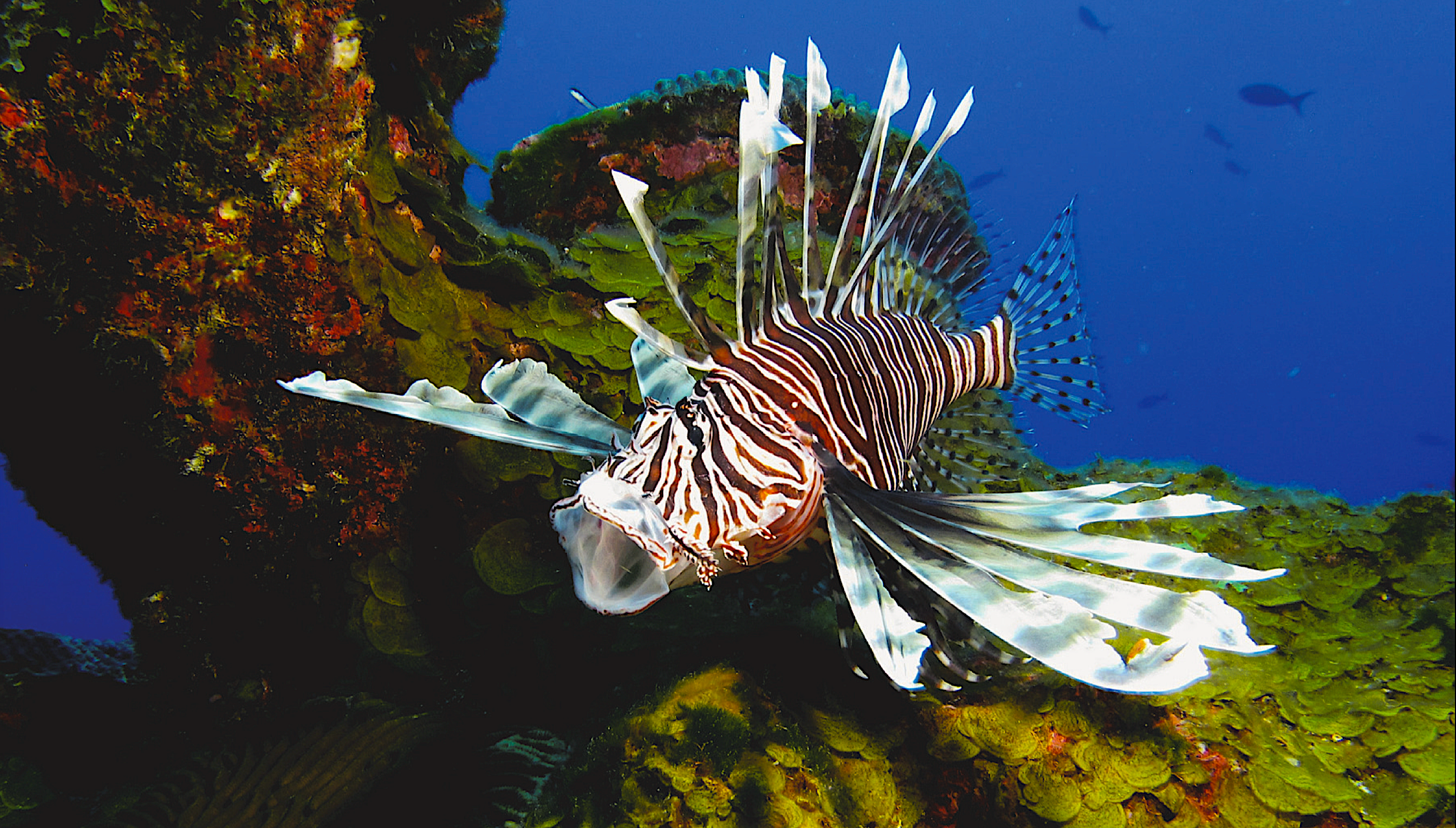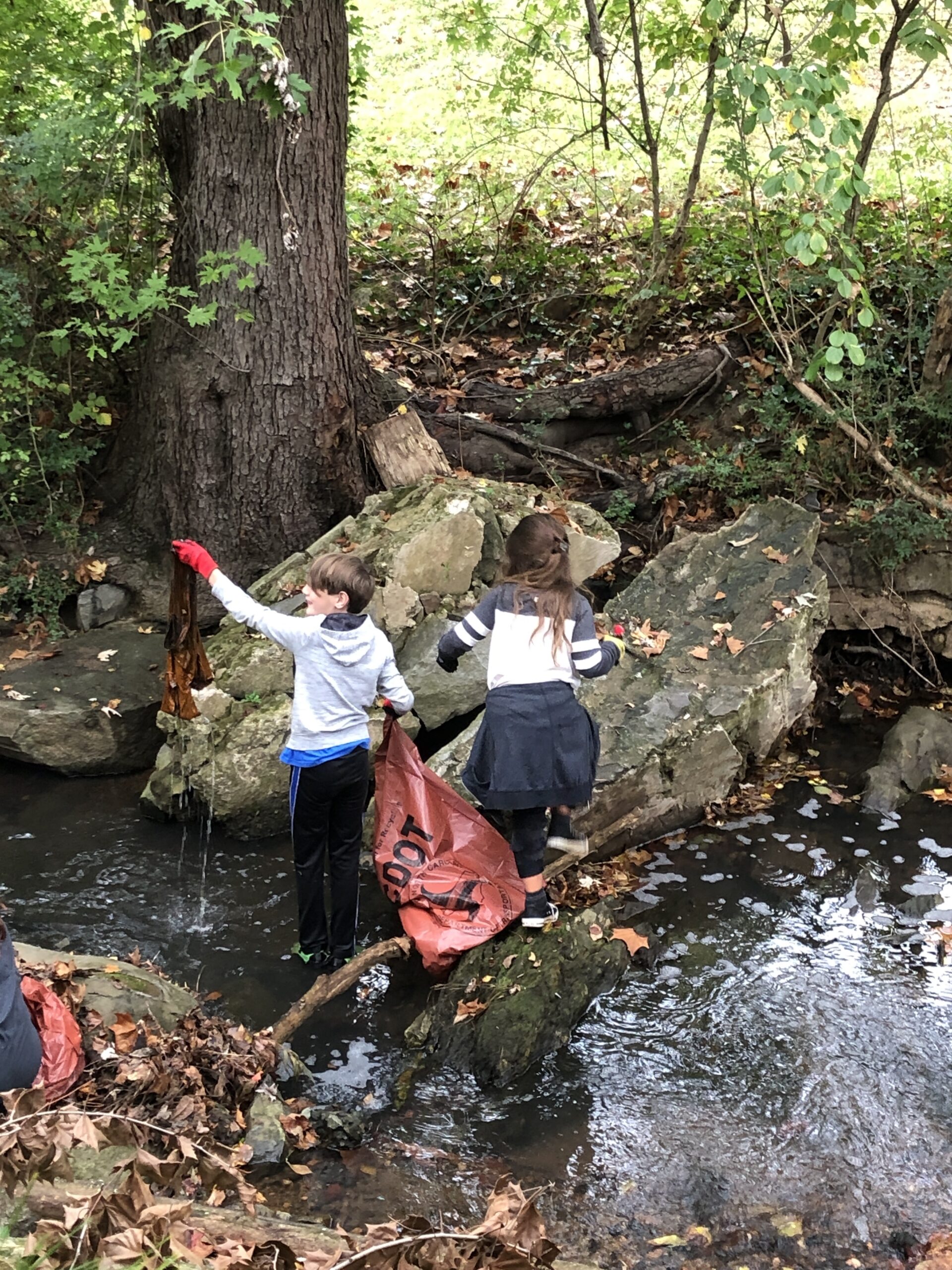The program title — Aquatic Invaders — begins to draw a Saturday afternoon crowd.
The added lure of “audience participation” fills many seats in the North Carolina Aquarium at Fort Fisher auditorium, where educator Ruth Schneider is ready to share a tale of good intentions gone bad.
Youngsters are still visibly excited from watching amazing fish and other creatures in nearby tanks. At least a few parents are simply happy to find a spot to rest. The crowd also includes a school group from Fayetteville, visiting college students with a professor from Minnesota, and professionals from Greensboro.
Schneider faces distinct advantages and challenges. Her all-ages audience has an interest in North Carolina’s environment — as evidenced in their choice to visit the aquarium. But she has only 20 minutes to broach a complex topic: the introduction and spread of aquatic invasive species. Even the quick label is a mouthful.
Forget the electronic presentations. Ditto for a flashy video. Like fellow educators at 210 sites across the nation accredited by the Association of Zoos and Aquariums (AZA), she has a decidedly low-tech plan. She simply will tell them her story.
Standing beside a large banner that shows a healthy and diverse aquatic ecosystem, Schneider explains that she loves living near the water.
She asks for volunteers to play the parts of native species. Arms shoot into the air. Schneider selects six to start. As each arrives near the banner, Schneider announces a particular plant or animal species and gives each youngster a letter “N” for native.
Everything seems fine and dandy. To confirm, Schneider cues The Biodiversity Song by Billy B. The six youngsters circle chairs in front of the banner. The music stops. “You all found your place!” Schneider explains.
Trouble in Paradise
Schneider explains that her love of nature also is reflected inside her home. But she runs out of time to care for a pet fish and a turtle. Maybe they will love being in the wild, she muses as she releases them into the water, along with their plants from the aquariums.
New volunteers arrive on stage for these two rounds, each receiving a letter “I” for introduced species. Each time the music stops, the introduced species scramble for seats along with the native species. If they don’t get a seat immediately, the new species discover that without natural predators, their letter “I” now stands for invasive because they can muscle their way into native niches.
Each child who loses a seat removes a panel from the top layer of the banner, revealing part of a new image of the ecosystem. Their sadness is obvious.
Schneider continues her story. With her newfound free time, she goes fishing in a nearby pond, but she doesn’t clean plants from her boat when she returns. And she dumps the leftover rusty crawfish she used as bait.
Two more volunteers arrive on stage as introduced species that become invasive.
Two more native species lose their spots — and take more pieces of the original ecosystem.
“My pond is changing a lot,” Schneider observes aloud. The audience agrees, calling out specific changes in the background banner — such as more plants that clump and block sunlight, and fewer types of creatures.
“Once an invasive species gets here, there’s not a good answer,” Schneider says, asking the youngsters what she could do differently next time. “We are looking to you — to the children — for answers.”
Eagerly, the audience rattles off suggestions. “You could give your fish to a friend,” says Katherine Connolly, 13, who attended the program with a group from St. Ann’s School in Fayetteville.
“You shouldn’t release bait into the pond,” adds Sean Thompson, 11, of Chatham County. When the program started, he had told Schneider that he knew invaders could disturb ecosystems. But the program gave new information to Sean and his brother, Casey, 9. “It was fun.”
A National Effort
The visitors left this session of Aquatic Invaders with bookmarks highlighting additional online resources. They also took with them a basic understanding that health) ecosystems cannot operate like a game of musical chairs, with habitat and food up for grabs.
“Aquatic non-native species have disruptive effects on ecosystems’ overall health, populations of native species, local economies and at times even human health,” explains Alan Power of the University of Georgia Marine Extension Service and Georgia Sea Grant.
Lead scientist on the project’s development team, Power notes that many invasive species — including red lionfish, zebra mussels and numerous aquatic plants — often are introduced unintentionally by individuals who simply do not know better.
“We are raising awareness by engaging audiences with fun interaction,” says Peggy Sloan, education curator at the North Carolina Aquarium at Fort Fisher and the project’s lead educator.
“Together, educators and audiences identify specific positive actions to take — such as proper care and disposal of home aquariums and water gardens, and the role of cleaning boats and personal watercraft,” adds Terri Kirby Hathaway, North Carolina Sea Grant marine educator.
Funded by the National Oceanic and Atmospheric Administration’s National Sea Grant College Program, the Aquatic Invaders team drew upon the expertise in Sea Grant programs across the country and AZA member institutions, which attract more than 140 million visitors annually.
In planning stages, Sloan noted that available grants likely could fund a few large exhibits on invasive species. Rather, she suggested, the invasive species message could best be spread through an informal program led by educators across the nation.
The kit needed to be complete enough that busy staff members would not feel like they were starting from scratch. But it also needed to be flexible enough to suit the needs of zoos in Southern California and the Plains, or aquariums near the Great Lakes and Gulf of Mexico.
Thus regional sample scripts are provided, along with a list of species identified by the national Aquatic Invasive Species Task Force. In addition to program props and materials, the Aquatic Invaders educators’ kit includes a CD-Rom of supplemental materials, a DVD featuring sample programs in various settings, and links for more information — including national efforts such as Habitattitude, Stop Aquatic Hitchhikers and Nab the Aquatic Invaders — to be used in citizen science programs, camps, teacher workshops, etc.
“This is a great partnership to bring critical and useful information to our audiences who are eager to be environmentally aware in their actions,” adds Steve Olson, A7.A government affairs director and former associate director for North Carolina Sea Grant.
Olson played a key role in bringing the Sea Grant and AZA networks together for this project that includes scientists, educators, communicators, designers, extension specialists, administrators and fiscal officers who handled the grants, along with partners from other agencies.
Innovative Learning
During preliminary testing of the program in 2006, the Aquatic Invaders team received a partnership award from Coastal America, a national coalition of government and nongovernment agencies working to preserve coastal watersheds.
The project also fits closely with a major AZA study funded by the National Science Foundation. “Various studies have shown that individual programs do provide cognitive gain,” explains Joe Heimlich, an informal learning expert from Ohio State University and the Institute for Learning Innovation.
“We also learned that every visit increases the visitors’ commitment to the environment,” adds Heimlich who helped identify goals for the Sea Grant-AZA project.’ ‘A program like Aquatic Invaders gives learners a context in which to connect with the issue in a positive way while gaining new insights, understandings, and key actions they can undertake,” he explains.
“The vast majority of what a person learns, cognitively and affectively, about the environment and environmental issues comes from family, friends, movies, television, the Web, trips to the zoo/aquarium, visits to parks and museums — places other than formal educational settings,” Heimlich says.
This learning context is critical, Heimlich notes. “In school, invasive species becomes a topic necessary to understand for one item on a test. In the aquarium, learning about invasive species is immediate and visual. The dissonance of the lovely species in the tanks with the message of destruction is a powerful one that resonates well with learners.”
Debbi Stone, vice president for education at the Florida Aquarium, notes that the project team’s approach to identifying the most critical key messages for AZA audiences was useful and productive.
“All too often, educators like myself have messages and concepts that we are desperate to convey to our visitors. The challenge of bringing several manageable messages to a wide range of audiences in a very short period of time is one that we encounter frequently. I appreciated the realistic approach to the development of this program,” Stone explains.
During testing, her start found the program was adaptable. “It worked well with young children, families, school groups, and visitors of all ages. It is fun, entertaining, engaging, informative, and applicable to invasive species case studies at AZA institutions across the country.”
The Fayetteville group visiting the Fort Fisher Aquarium agrees.
“I liked that we had a chance to participate. We got to see how the ecosystem works,” says Derek Chan, 11.
Kayla Pratt, 12, declares the program “kid-friendly.”
Gerad Hutsell, 14, is equally pleased. “She involved us in the learning.”
Schneider also tells adults they are allowed to answer questions. Some, like Concordia College student Andy Shramm, even raise a hand to volunteer.
“I thought it was fun and informative,” Shramm says.
Interested in seeing an Aquatic Invaders program? In North Carolina, go online to ncaquariums. Or check with your favorite AZA member institution.
To report an invasive species, call 877-STOP ANS, a hotline run by the U.S. Geological Survey.
Invasive Species Info
For more information, visit:
- www.invasivespecies.org
- www.invasivespeciesinfo.gov
- www.sgnis.org/kids
- www.habitattitude.net
- www.protectyourwaters.net
- http://www.issg.org/database/welcome
Katie Mosher, North Carolina Sea Grant’s communication director, is a founding member of the Sea Grant/AZA partnership and coordinates the Aquatic Invaders project.
This article was published in the High Season 2008 issue of Coastwatch.
For contact information and reprint requests, visit ncseagrant.ncsu.edu/coastwatch/contact/.
- Categories:



